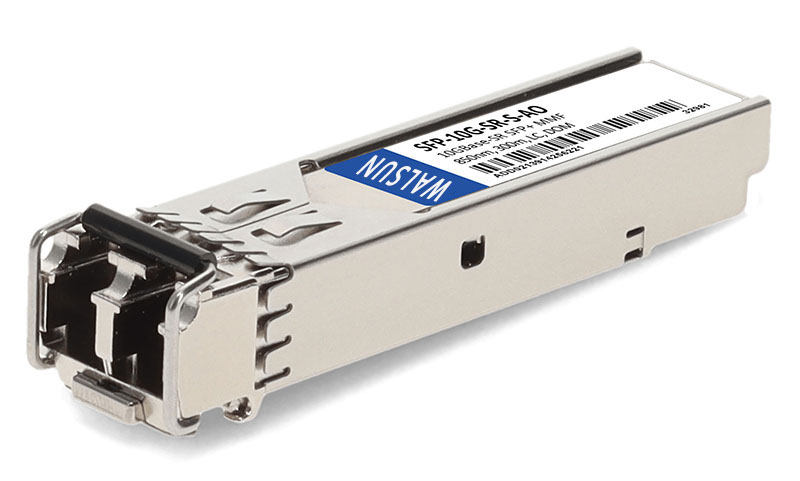

 Knowledge Base +
Knowledge Base +  2023.12.01
2023.12.01The "28" in QSFP28 refers to the number of gigabits per second (Gb/s) that the transceiver is capable of supporting. In this case, QSFP28 stands for Quad Small Form-factor Pluggable 28 and supports data rates of up to 28 Gb/s per channel, making it suitable for high-speed data transmission in networking and telecommunications applications.
Form factor & connectors
The term "form factor" refers to the standardized size and shape (or footprint ) of the optic, but other design features also help create each standard's definition. While there are many different transceiver form factors to consider, a few standards are more universal than the others.
Which you need is primarily determined by what form factors are compatible in the switch or router the optic is to be plugged in to, so it is always good to check what your system accepts.

AddOn's SFP-10G-SR-S-AO Cisco Compatible 1G SFP+ 40km LC Transceiver
Without the right form factor for your network environment, the optic may not fit into your switch or router at all. If it does connect, it may have impaired performance.
Can I use 100G QSFP28 port based with 40G QSFP+ transceiver?

Most Switches, Network Packet Broker (NPB), and other Network Element allow the use of 40G QSFP+ optics within QSFP28 slot to support 10G using fanout/Breakout cable or 40G Multimode straight conectivity using MTP to MTP fiber cable.
SFP vs SFP+ vs XFP vs QSFP+ vs CFP vs QSFP28 Differences
Through the above definitions of each type of fiber optic transceiver module, you may have a further understanding of them. Now, we are comparing these transeiver one by one.
SFP vs SFP+ (SFP+ vs SFP): Simple to understand, SFP+ is an updated vision
of SFP. SFP usually support 1.25Gbit/s to 4.25 Gbit/s while SFP+ supports data
rates up to 10 Gbit/s. When it comes to SFP vs SFP+, they have the same size and
appearance, but in a different standard which SFP is based on IEEE802.3 and
SFF-8472.
SFP+ vs XFP (XFP vs SFP+): In comparison to earlier XFP modules, SFP+ modules leave more circuitry to be implemented on the host board instead of inside the module. The size of SFP+ is smaller than XFP, thus it moves some functions to motherboard, including signal modulation function, MAC, CDR and EDC. XFP is based on the standard of XFP MSA while SFP+ is compliance with the protocol of IEEE 802.3ae, SFF-8431, SFF-8432.
SFP+ vs QSFP+: QSFP+ has four-channel SFP+ interfaces which can transfer rates up to 40Gbps. And of course, they have different standards.
CFP vs QSFP+: QSFP+ (Quad Small Form-Factor Pluggable Plus) modules offer customers a wide variety of high-density 40 Gigabit Ethernet. The CFP is a hot-pluggable transceiver module form factor that supports a wide range of 40Gb/s and 100Gb/s applications such as 40G and 100G Ethernet.
Related
How does a QSFP work
Can QSFP28 run at 40G
Can you plug SFP into QSFP
Subscribe to the newsletter
for all the latest updates.
2-5# Building, Tongfuyu Industrial Zone, Aiqun Road, Shiyan Street, Baoan District, Shenzhen. China
